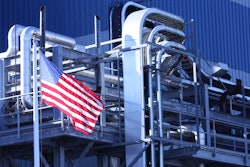In today’s environment of globalization, mergers and acquisitions, joint ventures, and exponential growth, standardizing on a single Enterprise Resource Planning (ERP) system is not always easy. For example, a manufacturing plant has distinct needs that differ from a corporate office’s priorities. Attempting to deploy a compromise solution usually leaves one side sacrificing functionality and IT managers trying to patch disconnected point solutions. A better approach is to deploy a two-tier system, a carefully connected network of two ERP solutions that share data, maintain visibility throughout the enterprise, and provide users with the best of both worlds.
When is One ERP Not Enough?
Unneeded Complexity. In today’s complex global economy, the corporate structure often incudes one large enterprise with multiple branches or divisions. Often, the subsidiaries operate semi-autonomously but share financial reporting with the parent company, rolling up revenue and account data into the bigger picture. The corporate entity likely has complex financial and reporting requirements to effectively manage multiple branches across global markets.
Poor User Experience. Large accounting systems can be cumbersome for a smaller division and ill-suited for the regional or vertical industry needs. A mega-sized, monolithic ERP can be a heavy burden for a small to mid-sized division to manage, especially when there is a small IT team trying to accommodate the reporting and customizations required. Likewise, training and on-boarding new recruits can be challenging when the system is a large, hard-to-use ERP.
Missing Functionality. When the division is a discrete manufacturer, a service-intensive company, or a fabricator, the functionality of the finance-centric ERP may be ill-equipped to manage specialized processes – such as product configurations, Make-to-Order scheduling, field service dispatch, warehouse management, or inventory control of components and subassemblies. In fact, the entire shop floor operations, product development, and quality control needed by manufacturers may not be sufficiently addressed by the parent company’s ERP.
What is a Two-Tier System?
A two-tier ERP strategy gives manufacturers the flexibility they need to quickly respond to changes across their business and affordably meet the specific needs of each location. With a two-tier ERP strategy, manufacturers do not need to view their headquarters and plants as a collective whole. Instead, they can consider the needs of each location, along with the organizational operational requirements, to choose the best systems capable of easily working together to meet their diverse needs. This approach provides manufacturers the necessary ERP elements in both headquarters and at the plants, without requiring implementation of unneeded functionality in either place.
With a two-tier ERP strategy, the plant can focus on the operational business systems needed to run that location, while headquarters can focus on the financial management and other necessary systems needed to run the organization overall. Here are three elements needed to make a two-tier ERP strategy effective work:
1. Vertical-Specific Functionality. The distinct industry needs of the plant must be built into the ERP system. For example, a plant that manufactures aerospace and defense components has to meet different regulatory requirements than a plant that manufactures automotive equipment. An ERP system that is designed to help manufacturers meet the regulatory requirements of a specific industry is going to be more effective than an ERP system that does not address those key nuances. With this type of built-in vertical specialization, cumbersome customizations which hinder future upgrades will not be necessary.
2. Cloud-Based Solution. The second element to successfully implementing a two-tier ERP strategy is a cloud-based ERP system. Cloud-based ERP software offers significant benefits over software deployed on-premise. With the right cloud-based solution, an ERP system can be implemented quickly and easily integrated with existing systems. It will not require significant internal IT resources, is available anywhere at any time and has true global capabilities.
Cloud deployment also means a quick, easy implementation – with minimal internal resources required. All the heavy-lifting of selecting and setting up hardware, security and back-ups is done by the ERP solution provider. The right cloud-based ERP system is ready-to-go with almost no customization, enabling implementation in as little as a couple of hours.
3. Easy Integration. Integration is critical for an effective two-tier ERP strategy, which makes it easy to share data and consolidate financial reporting across the enterprise. Highly flexible middleware, which can connect two systems, is key. Cloud deployments make this integration easier by requiring less internal support—in terms of both physical infrastructure and IT resources—and cause minimal business disruption during implementation.
Positive Impact On the Bottom Line
Implementing different ERP systems across a business may seem counterintuitive to CFOs in pursuit of a consolidated view of operations. But technology advancements have made integrations far more seamless and can enable enterprise-wide visibility and automation. This can help to significantly reduce the time and error associated with financial consolidation. When implemented correctly, a two-tier ERP strategy reduces complexity, while delivering key benefits, such as:
Lower Total Cost of Ownership. A two-tier ERP strategy allows manufacturers to pay only for the features required at various locations, rather than subsidizing a full ERP implementation in every instance.
Greater Flexibility, Agility, and Scalability. Implementing multiple software systems no longer implies organizational chaos. Different solutions can integrate and coexist seamlessly, eliminating operational silos and increasing efficiency. Because of the flexibility of cloud-based ERP solutions, they can easily scale to accommodate growth—whether organic or through mergers and acquisitions.
Reduced Training Requirements. Because cloud-based ERP systems are less complex, training requirements are also usually reduced, allowing staff to get up to speed quickly.
Improved Risk Management. As organizations grow and become more global, regional compliance and risk management increase overall complexity. A two-tier ERP strategy means companies can implement solutions with global management capabilities to ease deployment, stay in compliance, and reduce risk.
Increased Visibility. When integration is done right, a two-tier ERP strategy provides a greater level of visibility across the business because each location has technology suited to its unique needs.
Final Take-Away
A two-tier system makes sense. Rather than shackling the entire enterprise to a single, multi-purpose ERP system, divisions can deploy the vertical-special solution they need, while connected to the parent solution. For complex manufacturing operations, a two-tier system gives management and IT professionals the power and tools they need to manage their sites’ individual needs – without sacrificing enterprise-wide visibility. Integration between the two solutions with cloud-based, highly flexible middle-ware is key. Business agility, risk management, and cost control can all be dramatically improved as a result of using a two-tier solution.
Nick Castellina is Director of Industry & Solution Strategy at Infor.























